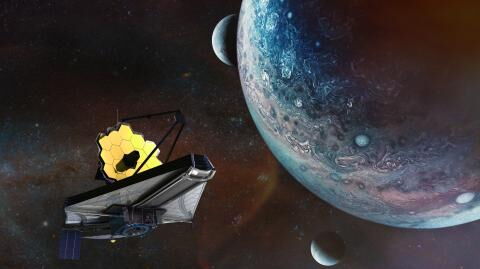While pollution is a big concern on our planet, it seems as though we seldom think about the pollution surrounding our planet. Our ambition to conquer space has gone through many trials and errors and as technology advanced, we relied more on satellites in disciplines such as telecommunication, meteorology, navigation, and surveillance. With each launch that was successful came many others that were not thereby creating a technological graveyard that orbits Earth.
Discover our latest podcast
According to the European Space Agency, ‘more than 6050 launches have resulted in some 56450 tracked objects in orbit, of which about 28160 remain in space and are regularly tracked by the US Space Surveillance Network’. Out of this immense number, only 4,000 are intact operational satellites.
Why is this important?
As the number of debris surrounding the planet increases, the chance of unexpected collisions also goes up. More monitoring is needed to ensure that the existing functioning satellites and space stations are forced to make more evasive maneuvers when they come too close to dangerous floating junk.
In the case collisions do happen, many of the functioning satellites in orbit handle critical operational tasks that make up important infrastructure for institutions such as the military, telecommunications, and navigational data which could be catastrophic should there be any operational disruption. Furthermore, there are many astronauts currently orbiting the planet in either space crafts or space stations, their lives could be in danger anytime there’s a risk of collision or explosion due to the floating debris.
Some of this floating junk also has the potential of reentering the earth’s atmosphere. Depending on its size, most of the space junk gets burned off before ever reaching the surface. However, there’s another danger to this process as this incineration can release complex chemicals during reentry thereby weakening the Ozone layer.
On the other hand, large debris can create a chain reaction of collisions known as the Kessler Syndrome; a domino effect through which one collision creates another. The last recorded event was in 2009, and with the exponential growth in debris since then, another collision sequence is very possible.
Can space be cleaned?
Retired NASA senior scientist for orbital debris research Donald Kessler says:
There is now agreement within the community that the debris environment has reached a ‘tipping point’ where debris would continue to increase even if all launches were stopped.
This statement from the scientist who first foretold of the possibility of the collisions means that despite the advancements in rocket technologies that wouldn't generate as much debris in the first place, an effort to clean the already existing damage is essential to ensure that space exploration has a future. However, the diverse nature of the debris creates challenges for these efforts. From infinitely small paint chips and shards to entire rocket propellers, no single mission can take care of all the pieces.
Efforts are well underway to tackle the issue, for example, Japanese-based satellite company Astroscale has developed and launched a two-satellite cleaning mission. One satellite works as a 'servicer' that safely removes floating junk and the other acts as a 'client that doubles as an object of interest. While this is not an end-all solution, it is still a commendable effort that, at least attempts to make the prospect of a clear orbit somewhat achievable in the future.
Read more
⋙ Astronauts may no longer be able to go into space for this concerning reason
⋙ Mars in 45 days? NASA's new project to reach the Red Planet quickly
Sources:
Evreka: From Earth to Space: The Dangers of Space Junk
ESA: About space debris
Scientific American: Space Junk Removal Is Not Going Smoothly















